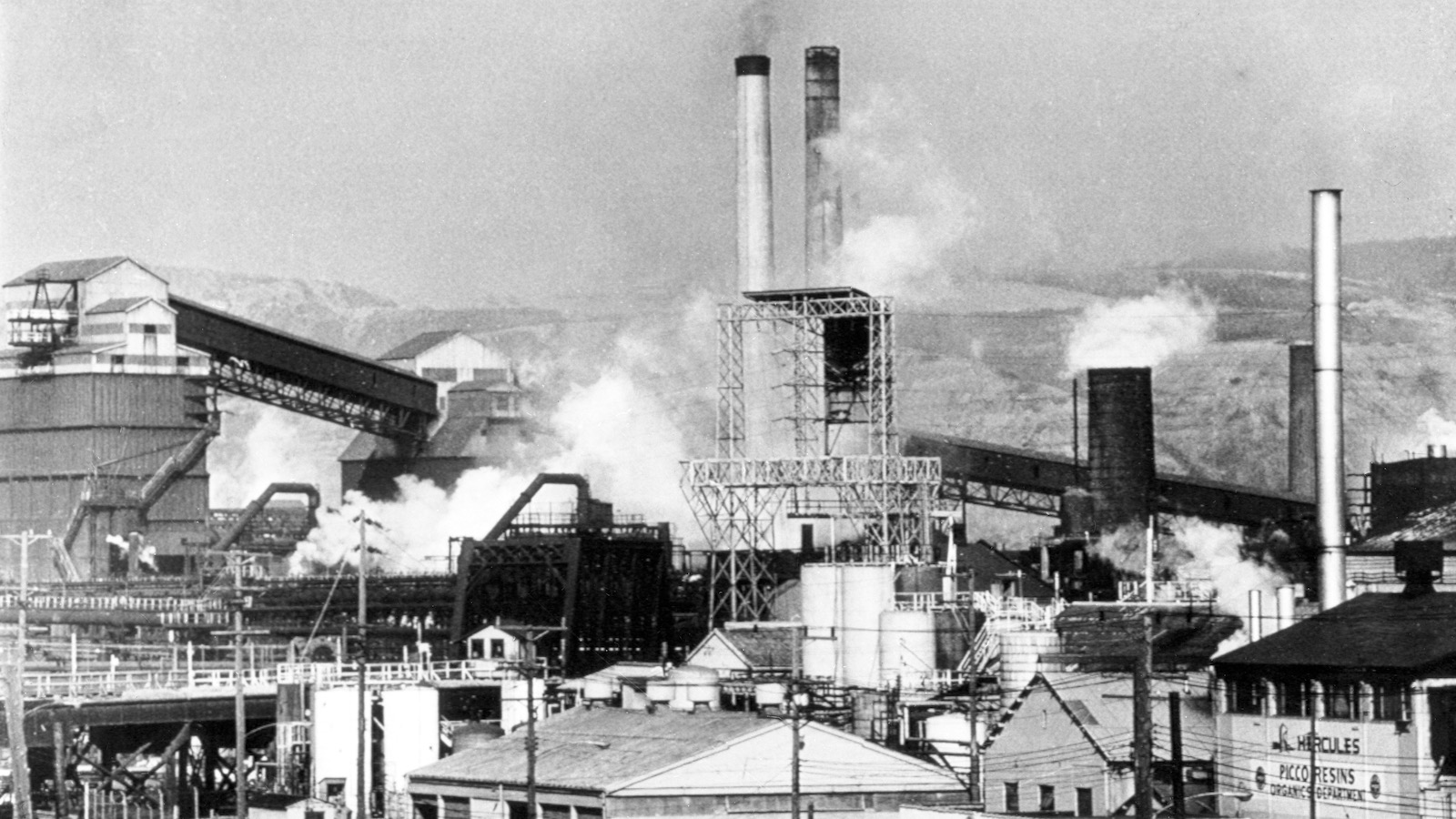
Pittsburgh, in its founding, was blessed and cursed with two abundant natural resources: free-flowing rivers and a nearby coal seam. Their presence made the city’s 20th-century status as a coal-fired, steel-making powerhouse possible. It also threw so much toxic smoke in the air that the town was once described as “hell with the lid off.”
Though air quality laws strengthened over the decades, pollution in Pittsburgh and surrounding Allegheny County has remained high, ranking among the 25 worst metro areas in the United States for fine, easy-to-inhale particles known as PM2.5. Carbon pollution can often feel so big — borne on the air, causing ice caps to go black and melt. But it also causes problems much closer to home. Allegheny County’s inhabitants are among the top 1 percent in the nation for cancer risk, and the area is notorious for its high rates of asthma and heart issues, both of which, like the biggest emitters, are concentrated in low-income neighborhoods and communities of color. These kinds of health problems can often seem both mysterious in origin and inescapable for the people who live with them. However, the January 2016 closure of the Shenango Coke Works coal-processing plant provided an astonishing example of how quickly those same communities can recover from the most dire impacts of pollution.
Shenango was a coke oven — a facility that heats coal to around 2,000 degrees Fahrenheit to produce coke, which is in turn used to make steel. Such operations are famously nasty particle polluters, emitting not only carbon dioxide but also contaminants like benzene, arsenic, lead, and mercury.
The research, led by the New York University-Langone School of Medicine, used medical records from area hospitals to determine emergency room visits and hospitalizations for heart ailments in the three years preceding and following the closure of the plant. They found an astonishing 42 percent drop in weekly emergency cardiovascular admissions after 2016. That immediate drop was followed by a downward trend that continued for three years. The study also found corresponding steep drops in sulfur dioxide — as high as 90 percent near the facility and 50 percent at a monitoring station six miles away. Arsenic levels plummeted by two-thirds.
Study co-author George Thurston compared the sudden improvement to the benefits of quitting smoking. “Over time the body recovers,” he said. “Instead of at an individual level, you’re really looking at a community healing after the removal of that exposure.”
To Thurston, and study lead author Wuyue Yu, this research shows that cutting carbon emissions offers more than an abstract, long-term, far-ranging result. It can actually save lives, almost immediately.
The study was prompted by years of local agitation about the plant. Shenango closed under intense community scrutiny and had paid the county millions of dollars in fines for multiple air quality violations.
For years, an organization called Allegheny County Clean Air Now, or ACCAN, fought to rein in ongoing emissions at the plant, bringing in the Environmental Protection Agency, the Allegheny County health department, and Carnegie Mellon University to monitor the plant’s pattern of violations and the health consequences for its neighbors. ACCAN members served as community scientists, collecting data and taking the results to local officials, company shareholder meetings, and U.S. Steel. Even steelworkers from the plant occasionally attended meetings, expressing concern about the situation. Now, says ACCAN member Thaddeus Popovich (who was told that there’s a 40 to 50 percent likelihood that his own triple-bypass heart surgery was prompted by living half a mile from Shenango), he and his peers feel “vindicated.”

Bettmann Archive/Getty Images
After plant’s closure, members of ACCAN gathered and set to paper their memories of life before Shenango shut down. In the resulting collection, called Living Downwind, people describe living with fiery and sulfurous smells and mysterious ailments. Angelo Taranto, an active ACCAN member, lost his wife to a host of respiratory problems he’s sure were caused by Shenango’s billowing smoke. “These personal situations really energize people to want to do something,” he said.
After the closure, Taranto said, ACCAN encouraged the Allegheny County health department to pull together some retrospective health studies. In 2018, Dr. Deborah Gentile documented a 41.6 percent drop in uncontrolled pediatric asthma two years following Shenango’s shuttering.
“What we were hearing from county officials was that they didn’t think the closure would be a boon to county health,” Taranto said. “We heard similar things from the company itself and we knew that wasn’t true, and we knew that we couldn’t let those types of statements remain unchallenged.”
There’s still a long way to go for the greater Pittsburgh area, though. Matt Mehalik, the director of the Breathe Project — which used its resources to support ACCAN and connect them to researchers — points to similar facilities, such as the Clairton coke oven and the Mon Valley steel works, as contributors to major public health problems. Clairton, 10 times as large as Shenango ever was, sits near a low-income, majority-Black neighborhood, and community organizations have worked for years to hold the facility accountable to the harm it has caused. Environmental advocates are currently urging the EPA to revoke Clairton’s permit. The EPA has also proposed a stricter standard for toxic coke oven emissions, which could increase pressure on plants like Clairton.
Mehalik is excited about a potential transition to less coal-reliant forms of steelmaking as a long-term solution for Allegheny County. “We know that an investment in the right type of green steelmaking is needed if there is a future of steelmaking in the Mon Valley,” he said. “Perpetuation of a polluting facility that comes at the expense of our county is highly problematic.”
This story was originally published by Grist with the headline After a Pittsburgh coal processing plant closed, ER visits plummeted on Aug 11, 2023.
